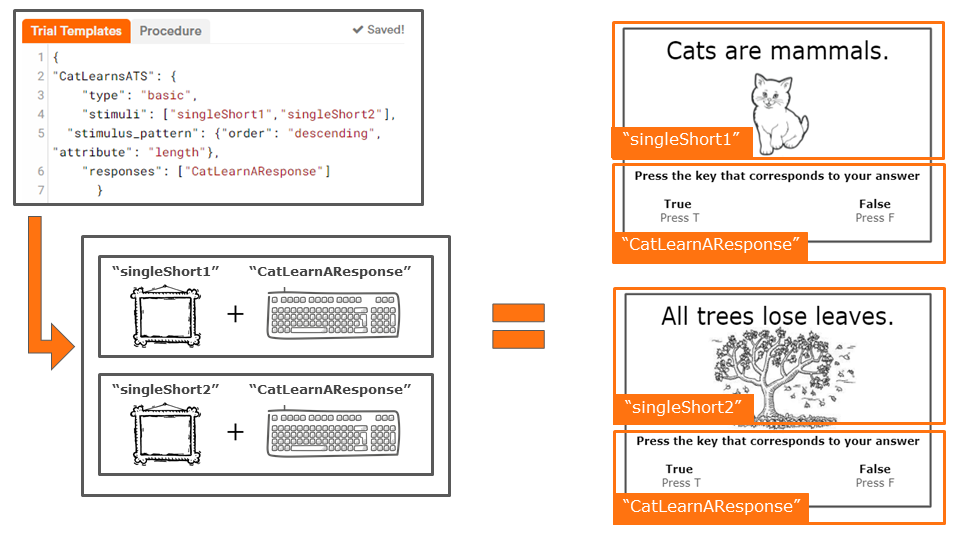Trial templates are used to define how the stimuli and responses of a study are organized on trials.
A trial template is defined by a property-value pair under the "Trial Templates" section of the FindingFive Study Editor. The property name serves as the name of the trial template, which can be referenced in other parts of the study (most likely, in procedure. Its value is another dictionary that specifies the detailed properties of the trial template.
An intuitive way to understand the role of trial templates is to view them as definitions of how trials are realized from a hypothetical collection of all possible configurations. For example, consider the following definition of a trial template named CatLearnATS:
"CatLearnATS": {
"type": "basic",
"stimuli": ["singleShort1","singleShort2","singleShort3","singleShort4","singleShort5"],
"stimulus_pattern": {"order": "descending", "attribute": "length"}
"responses": ["CatLearnAResponse"],
},
This trial template CatLearnATS defines a set of trials that can be realized from this particular template. The stimuli to be displayed on those trials come from the set ["singleShort1","singleShort2","singleShort3","singleShort4","singleShort5"]. Implicitly, this also means that a total of five trials can be realized from this template. Across those five trials, these stimuli will be presented in an order that is descending based on the length attribute of those stimuli. Finally, on each of the five realizable trials, the same response CatLearnAResponse will be used.
